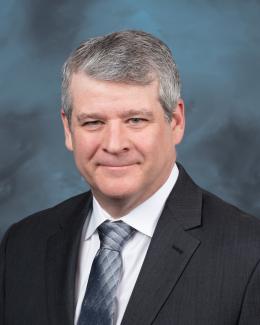After the linear plasma device Proto-MPEX wrapped up scientific operations in late April, the Material Plasma Exposure eXperiment (MPEX) team at Oak Ridge National Laboratory has moved to completing the MPEX design and placing early procurements, including contracts for superconducting magnets and construction.
“The magnets we will be using with MPEX are comparable to those used in magnetic resonance imaging, or MRI, in terms of the relative size and field strength,” said Fusion Technology Group Leader Robert Duckworth, who has been guiding the effort on MPEX’s seven solenoid magnet subsystems.
In early June, MPEX awarded Tesla Engineering, a United Kingdom-based company, a contract to design and build the MPEX magnet system according to the researchers’ specifications, which include the ability to provide steady state axial field profile along the device length with ranges between 0.05 and 2.5 teslas.
Unlike MRI systems that typically operate in isolation from other magnetic field sources, the engineering challenge we have with MPEX is putting together seven magnet systems with varying field strengths and slightly different geometries and the resultant electromagnetic and mechanical interactions.
Each magnet system consists of multiple coil windings that transition into a superconducting state once they are immersed in liquid helium. These low temperature superconducting coil windings and the liquid helium are stored in a vacuum vessel designed to minimize the loss of liquid helium while preserving the desired mechanical and electromagnetic configuration and support structures. The MPEX operation goal is for scientists to select a desired field profile relevant to their science while the magnet system operates quietly in the background.
Six out of seven magnets will be constructed using commercially available Niobium-Titanium (NbTi), an alloy that becomes superconductive at cryogenic temperatures. The seventh magnet is a water-cooled copper system that provides the steady state and transient magnetic field of the helicon source.
Superconducting magnet systems were selected for the final MPEX configuration due to the ability to generate the desired fields for extended lengths of operations, hours to days, to maximize the value of the science achieved through understanding plasma material interactions.
As the magnet system design and fabrication progress, the team is integrating these efforts with other systems needed in order to prime MPEX for assembly, a process scheduled to begin in late 2023.
Home sweet home
In the meantime, the building that will house the experiment at Oak Ridge National Laboratory (ORNL) is undergoing a renovation process. Proto-MPEX has already been disassembled to make space for the new device, and new infrastructure modifications are taking place.
“The components being fabricated need a place to go once they are delivered for assembly, so we’re currently preparing the space according to a set of specifications put together by our team,” explained MPEX Project Director Phil Ferguson.
Because MPEX is an integrated project with multiple systems working together, the team’s plan will make sure that other necessary systems—such as vacuum, high voltage power supplies, gyrotrons, and other structures—have adequate space in the design.
Gathering all of the MPEX requirements and redesigning space to meet those needs can be a daunting task, said Ferguson: “That’s why we are working with a team of architects and engineers from Burns & McDonnell. They are developing designs for the existing space that will enable the MPEX system to perform up to its capabilities.”
Additionally, the team is preparing to host the 2nd MPEX User Research Forum (MURF). The first workshop in 2019 was dedicated to informing the requirements of MPEX’s Surface Analysis Station. This year’s workshop will be the first in a series of scientific workshops to define the research strategy moving forward, explained Juergen Rapp, MPEX Chief Scientist.
Participants in the event will provide input for the MPEX research program over the first five years of operation.
“It is important that during this new phase we continue to keep the scientific community engaged and developing new ideas,” Rapp said.
The 2nd MURF will take place online, September 13 and 14, 2021, with national experts in plasma material interactions and representatives from fusion industry.
“We’re excited about moving forward and defining an impactful research program that will make the most of the future operation of MPEX,” Rapp added.
MPEX is supported by DOE’s Office of Science. UT-Battelle LLC manages Oak Ridge National Laboratory for DOE’s Office of Science, the single largest supporter of basic research in the physical sciences in the United States. DOE’s Office of Science is working to address some of the most pressing challenges of our time. For more information, visit https://energy.gov/science.





